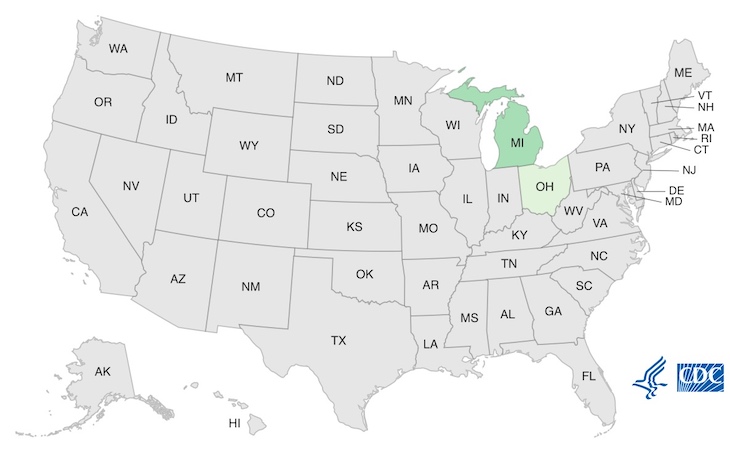A Michigan and Ohio E. coli outbreak has sickened at least 29 people and has hospitalized nine, according to the Centers for Disease Control and Prevention (CDC). A food has not yet been identified. The government is calling this a “fast-moving outbreak.”

Officials in Wood county in Ohio and Ottawa county in Michigan have been reporting an alarming increase in E. coli illnesses in the past week. In fact, on August 17, 2022, Michigan officials said that there are 98 people sick with E. coli infections in Ottawa, Kent, and Oakland counties.
Public health officials are using the PulseNet system to find people who may be part of this outbreak. Whole genome sequencing is being used on patient isolates to match patients to the outbreak strain. And this genetic sequencing is showing that bacteria from patient samples are closely related genetically, which suggests that people in this outbreak got sick from eating the same food.
The patient case count by state is: Michigan (15) and Ohio (14). Illness onset dates range from July 26, 2022 to August 6, 2022. The patient age range is from 6 to 91 years. While officials in Michigan have said that there are two patients sick with hemolytic uremic syndrome (HUS), the CDC report did not mention that complication.
The true number of people sickened in the outbreak is likely much higher. Some people do not see a doctor and are not counted. And recent illnesses have probably not yet been reported to officials since it can take up to four weeks to determine if a patient is part of an outbreak.
Symptoms of an E. coli infection can include a low grade fever, nausea, and vomiting. The characteristic symptoms are severe and painful abdominal cramps along with bloody and watery diarrhea. Symptoms of HUS include little or no urine output, bleeding from the nose or mouth, lethargy, easy bruising, and pale skin. Anyone experiencing these symptoms should see a doctor as soon as possible.

If you have been sickened with a Listeria infection, please contact our experienced attorneys for help with a possible lawsuit at 1-888-377-8900 or text us at 612-261-0856. Our firm represents clients in lawsuits against grocery stores and food processors.




